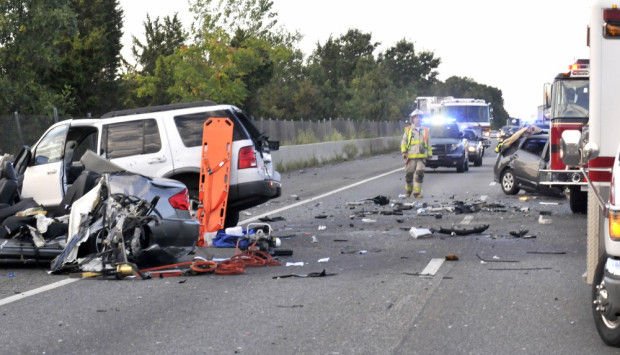Multiple Patient Incidents
Published .

Anytime an ambulance arrives, a scene size up is conducted by the medics. After determining if the scene is safe and if a mechanism of injury exists, the medics must determine the number of patients. Usually, ambulances respond to a single patient, but what would happen if there were more than one patient?
First, the ambulance needs to park downstream of the accident

If the traffic isn’t under control by the time the ambulance arrives at the scene, the medics shouldn’t even get out of the ambulance. Traffic should be controlled by the police and fire departments. It is easy to be hit by a car at an accident scene. By using the accident scene to provide a barrier between traffic and the ambulance, the medics have increased their safety by a wide margin.
The medics may need to call for additional resources in the form of more ambulances

A typical ambulance is designed to hold 2 patients. In some situations, the ambulance could hold as many as 5 patients, but generally the number is 2. If the medics arrive to the scene of a motor vehicle accident and are confronted with 4 patients, and each ambulance carries 2 patients, 2 ambulances will be needed. Since the medics arrived in an ambulance, they will need 1 additional ambulance. The medics don’t even have to get out of the ambulance to see that there are 4 patients in the accident. The request from dispatch can go as follows:
Ambulance – Medic One to dispatch
Dispatch – Go ahead Medic One
Ambulance – Looks like we have 4 patients on this call, we need one more ambulance to this call
Dispatch – Would you like them lights and sirens?
Ambulance – Yes for now please
The ambulance crew is ready dismount the ambulance and walk around the scene, appreciating the mechanism of injury and getting a count of the patients. The second ambulance is enroute to the scene but has not arrived yet. The next job for the medics to do is triage the patients. Triage means to sort. And in the case of a multiple patient incident, the worst injured patient needs to be transported first. There are countless ways to triage, but the georgiaemsacademy method is to use the eyeball method. Just look at the patients and figure out which one seems the worst.
- Patient with wrist pain from the airbag
- Patient with broken leg
- Patient with altered mental status
- Patient is emotionally distraught
Now we order the patients in terms of perceived severity. Which patients have the most severe injury out of the list above? The order can vary based on medic, but most would agree with the following order:
- Patient with altered mental status
- Patient with broken leg
- Patient with wrist pain from the airbag
- Patient is emotionally distraught
Now that the medics know who is the most injured (or who needs to be transported first), the medics can work on getting the most injured patients ready for transport. Spinal immobilization and splinting can be performed as the second ambulance arrives at the scene.
The most injured patients are loaded into the second ambulance. There are numerous reasons for the second ambulance to transport the most injured patients from the scene while the first truck continues managing the other patients.
- The first ambulance crew knows the lay of the land. They know where the other patients are located on the scene and have a good idea as to the extent of their injuries.
- The second ambulance can focus on taking care of the most injured patients without having to divert their attention to other patients or situations that may be present on the accident scene.
- The goal is to get patients off the scene. Not being encumbered with the role of scene management, the second ambulance is in a much better position to pick up a couple of patients and get them off the scene.

The remainder of the patients on this call can fit in Medic One. The crew can load the patients into the ambulance and transport. But what if there were more patients? The ambulance would prioritize the patients that are transported in Medic Three and Medic Four.
